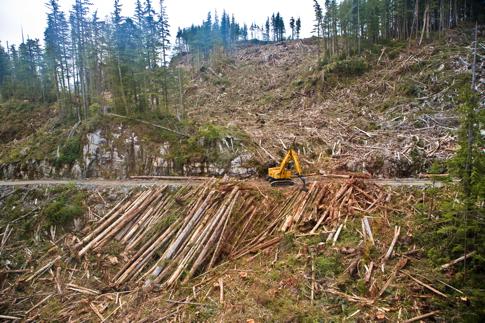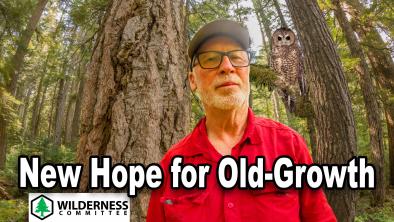Government doesnt seem to give a hoot

by Larry Pynn, The Vancouver Sun • Monday July 23, 2007
Government doesnt seem to give a hoot
Plans to save the owl do not include reduction in timber cutting
The B.C. governments plan to save the northern spotted owl -- a species endangered largely due to loss of old-growth forest habitat -- does not involve a reduction in timber cutting, freedom-of-information documents show.
Documents obtained by The Vancouver Sun from the governments Species At Risk Coordination Office (SARCO) state the recovery plan for the owl will involve "no impact to existing cutting permits" and "no net loss of timber supply."
Conservationists immediately denounced the finding, questioning how the owl can be saved without reducing the level of cutting and the designation of more timber lands for owl recovery.
Devon Page, a staff lawyer with Sierra Legal, said the provinces spotted owl recovery plan released in April 2006 included a pledge to "secure recovery habitat," a promise that now appears hollow.
"We assumed -- wrongly, it appears -- they were talking about giving owls back some of their original old-growth forests," he said. "Thats not what this says."
Fewer than 20 spotted owls, including just two or three mating pairs, are known to exist in fragmented parts of old-growth forest in southwestern B.C., with little hope of recovery on their own.
Agriculture and Lands Minister Pat Bell said in response that whether it be spotted owls or mountain caribou, the provinces goal in recovering species at risk is to minimize impact on the provincial land base.
He said the provinces immediate recovery plan for the spotted owl is a captive-breeding program, perhaps involving a combination of individuals from the U.S. and those plucked from the B.C. wilds, with the potential for "additional protection" of habitat down the road.
He said captive breeding has worked well for the burrowing owl -- a "species weve been able to recover" -- in the provinces Interior grasslands.
However, while hundreds of burrowing owls have been successfully raised in captivity and released to the wild, they have failed to establish a viable wild population and remain endangered.
SARCOs website on the spotted owl says the "causes and contributors to declines include loss and fragmentation of habitat, and more recently, competition from barred owls."
It states that over the past decade, B.C. has fully protected 182,000 hectares in parks and protected areas in the owls range and managed another 181,000 hectares of provincial forest to benefit owl habitat.
Page rejected those figures, arguing that much of the protected area involves rock and ice and younger forests rather than the low-level old-growth required by spotted owls.
The website notes the province in June 2006 established nine wildlife habitat areas totalling 23,000 hectares to protect owl sites known to be occupied in 2005.
Bell said some trading of timber areas with forestry industry was required to accommodate the protection.
B.C. expects to spend $3.4 million over five years on spotted owl recovery, from existing budget funds.
The FOI documents obtained by The Sun are dated July 31, 2006, and were labeled as final draft terms of reference.
Conservationists last month dropped a Federal Court of Canada application to force Ottawa to intervene under the Species at Risk Act to save the spotted owl, arguing the province had failed to do so.
Page said documents entered in the case showed Ottawa acted in good faith in not utilizing the act based on B.C. government commitments under its action plan -- promises conservationists now feel are being broken and that do not reflect the recommendations of scientists.
© The Vancouver Sun 2007


